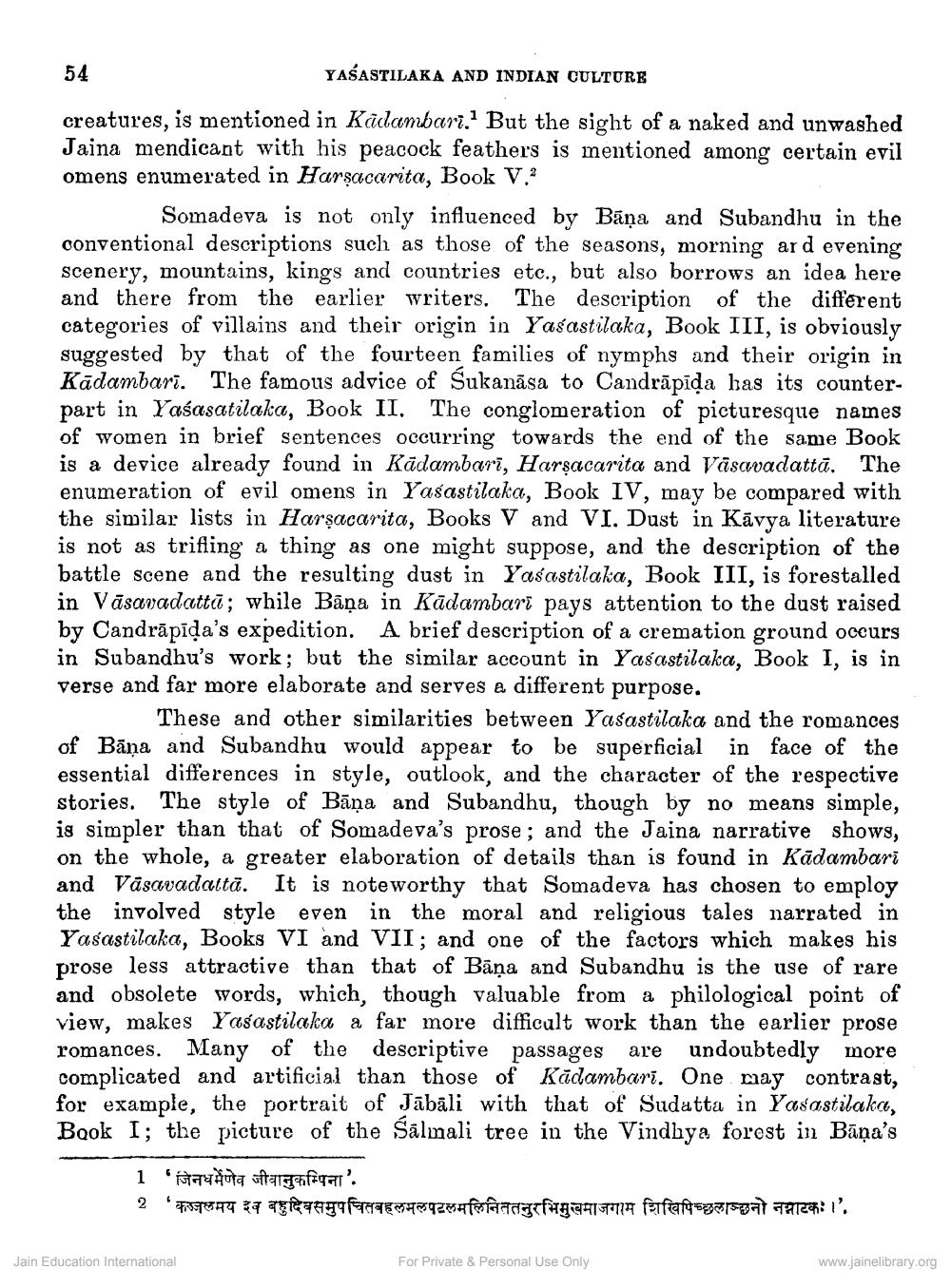________________
54
YAŠASTILAKA AND INDIAN CULTURE
creatures, is mentioned in Kadanbari. But the sight of a naked and unwashed Jaina mendicant with his peacock feathers is mentioned among certain evil omens enumerated in Harşacarita, Book V.?
Somadeva is not only influenced by Bāna and Subandhu in the conventional descriptions such as those of the seasons, morning ard evening scenery, mountains, kings and countries etc., but also borrows an idea here and there from the earlier writers. The description of the different categories of villains and their origin in Yasastilaka, Book III, is obviously suggested by that of the fourteen families of nymphs and their origin in Kādambari. The famous advice of Sukanāsa to Candrāpīda has its counterpart in Yaśasatilaka, Book II. The conglomeration of picturesque names of women in brief sentences occurring towards the end of the same Book is a device already found in Kādambari, Harsacarita and Vasavadattā. The enumeration of evil omens in Yasastilaka, Book IV, may be compared with the similar lists in Harsacarita, Books V and VI. Dust in Kävya literature is not as trifling a thing as one might suppose, and the description of the battle scene and the resulting dust in Yasastilaka, Book III, is forestalled in Vāsavadattā; while Bāņa in Kādambari pays attention to the dust raised by Candrāpīda's expedition. A brief description of a cremation ground occurs in Subandhu's work; but the similar account in Yasastilaka, Book I, is in verse and far more elaborate and serves a different purpose.
These and other similarities between Yasastilaka and the romances of Bāna and Subandhu would appear to be superficial in face of the essential differences in style, outlook, and the character of the respective stories. The style of Bāņa and Subandhu, though by no means simple, is simpler than that of Somadeva's prose ; and the Jaina narrative shows, on the whole, a greater elaboration of details than is found in Kādambari and Väsavadattā. It is noteworthy that Somadeva has chosen to employ the involved style even in the moral and religious tales narrated in Yasastilaka, Books VI and VII; and one of the factors which makes his prose less attractive than that of Bāņa and Subandhu is the use of rare and obsolete words, which, though valuable from a philological point of view, makes Yasastilaka a far more difficult work than the earlier prose romances. Many of the descriptive passages are undoubtedly more complicated and artificial than those of Kādambarī. One may contrast, for example, the portrait of Jābāli with that of Sudatta in Yasastilaka, Book I; the picture of the Salmali tree in the Vindhya forest in Bāņa's
1 sayfuta argital'. 2 'कज्जलमय इस बहुदिवसमुपचितबहलमलपटलमलिनिततनुरभिमुखमाजगाम शिखिपिच्छलाञ्छनो नग्नाटकः।'
Jain Education International
For Private & Personal Use Only
www.jainelibrary.org




